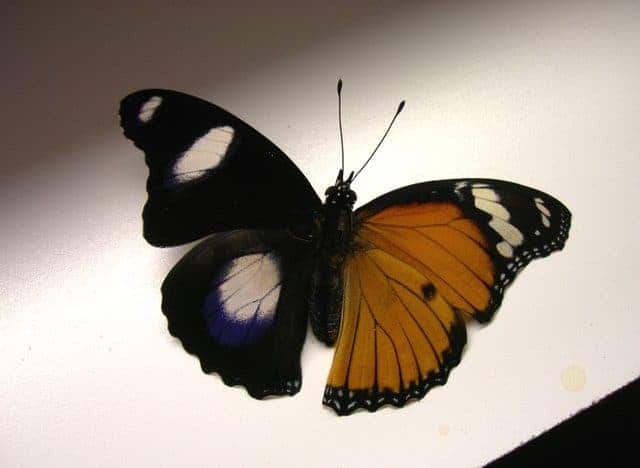Butterflies are pretty awesome insects – the pupal transformation into a butterfly through metamorphosis is one of the most spectacular processes in the biological world. For one month, until February 16, Drexel University will exhibit a spectacular sample: a butterfly suffering from bilateral gynandromorphism – in other words, a butterfly that is half male, half female.

The rare butterfly belongs to the Hypolimnas misippus species, or the Danaid Eggfly. The species exhibits a strong sexual dimorphism, with males having different sizes, patterns and colors from females. In October, Chris Johnson, a volunteer at a butterfly display at Drexel University in California and a retired engineer found a member of this species which is split into two halves – one male, and the other female. Its two right wings were of female of its species – big and tan with yellow and white spots. In the mean time, its two left wings donned a darker green, blue and purple shading, a prototype of males.
“It simply gave me goosebumps, it was surprising, something I never anticipated to see,” Johnson said.
The rare condition, bilateral gynandromorphism is not unique, but it’s very rare. Cases of gynandromorphism have also been reported in crustaceans, especially lobsters, sometimes crabs and even in birds. A gynandromorph can have one male half and one female half, or it can be a mosaic – without any clearly delimitated male and female areas.
Lepidopterist and entomology collection supervisor Jason Weintraub of the university said its the first butterfly gynandromorph he’s ever seen.
“It’s thrilling to see because you read about it, and you see specimens in collections, yet when you really see one alive with your eyes, its kind of stunning,” Weintraub included.


